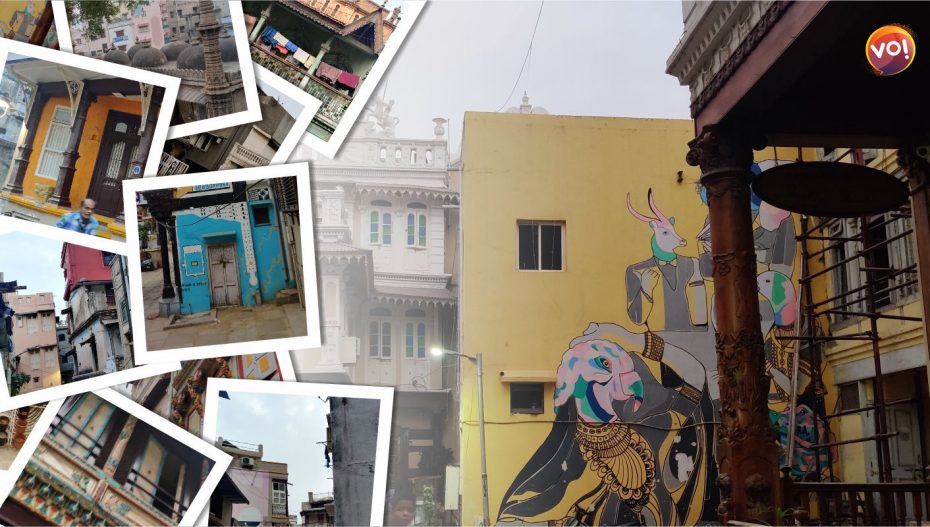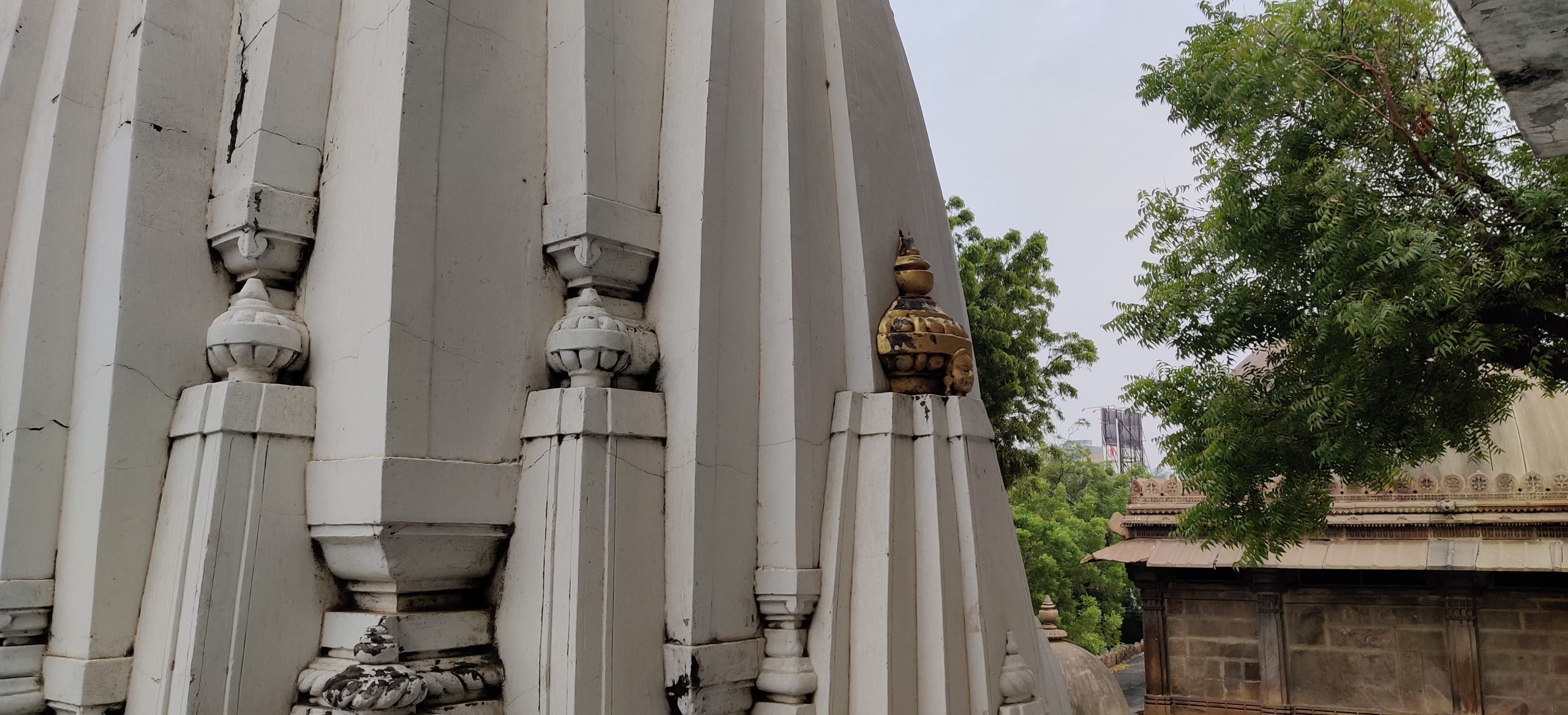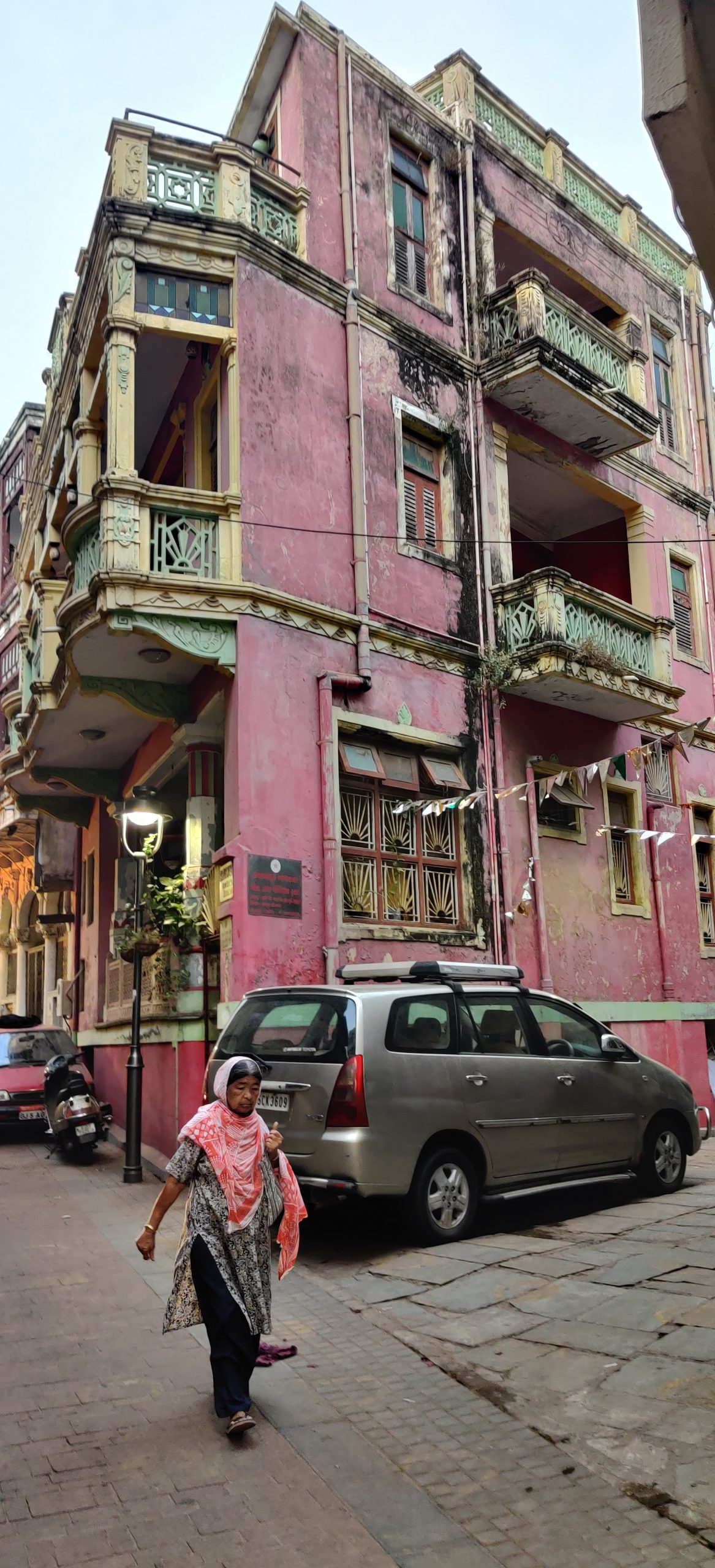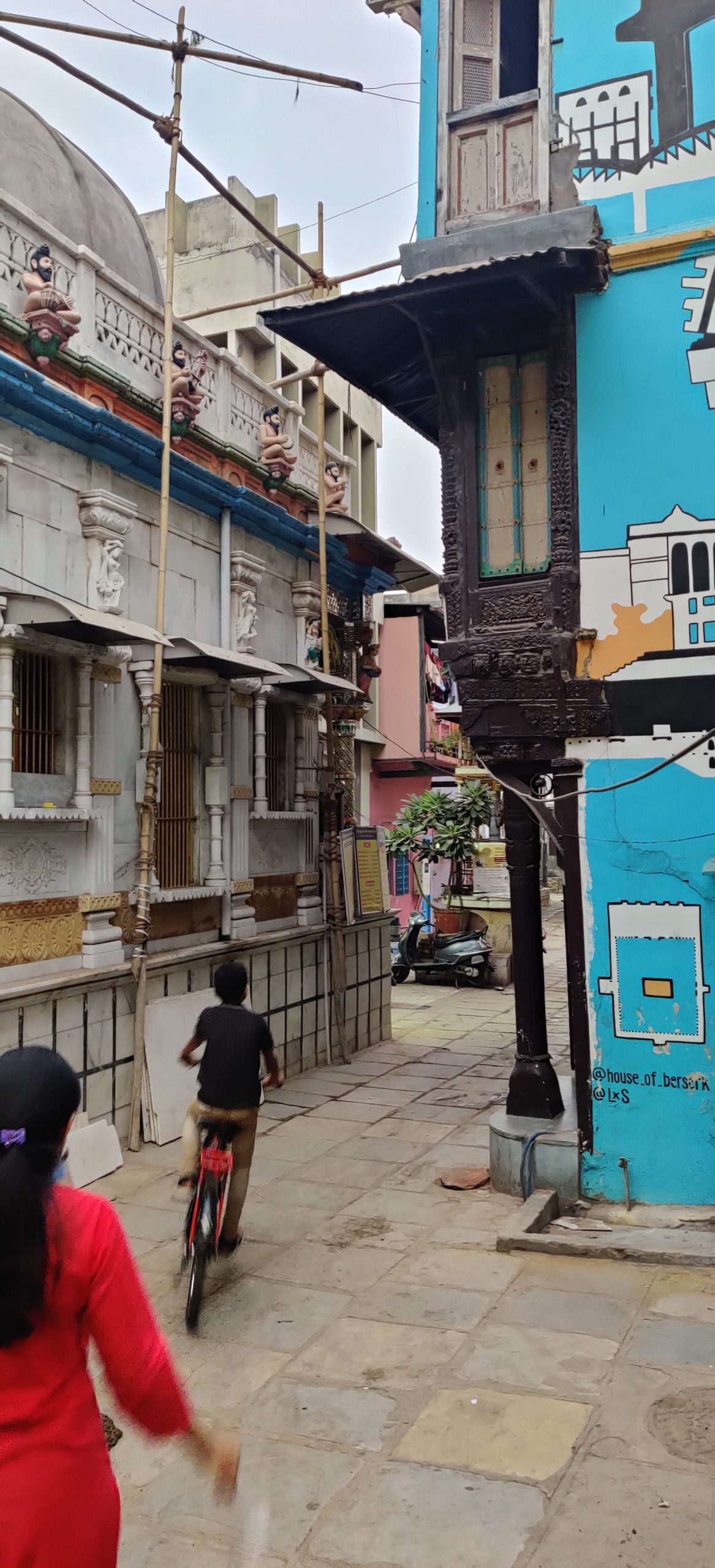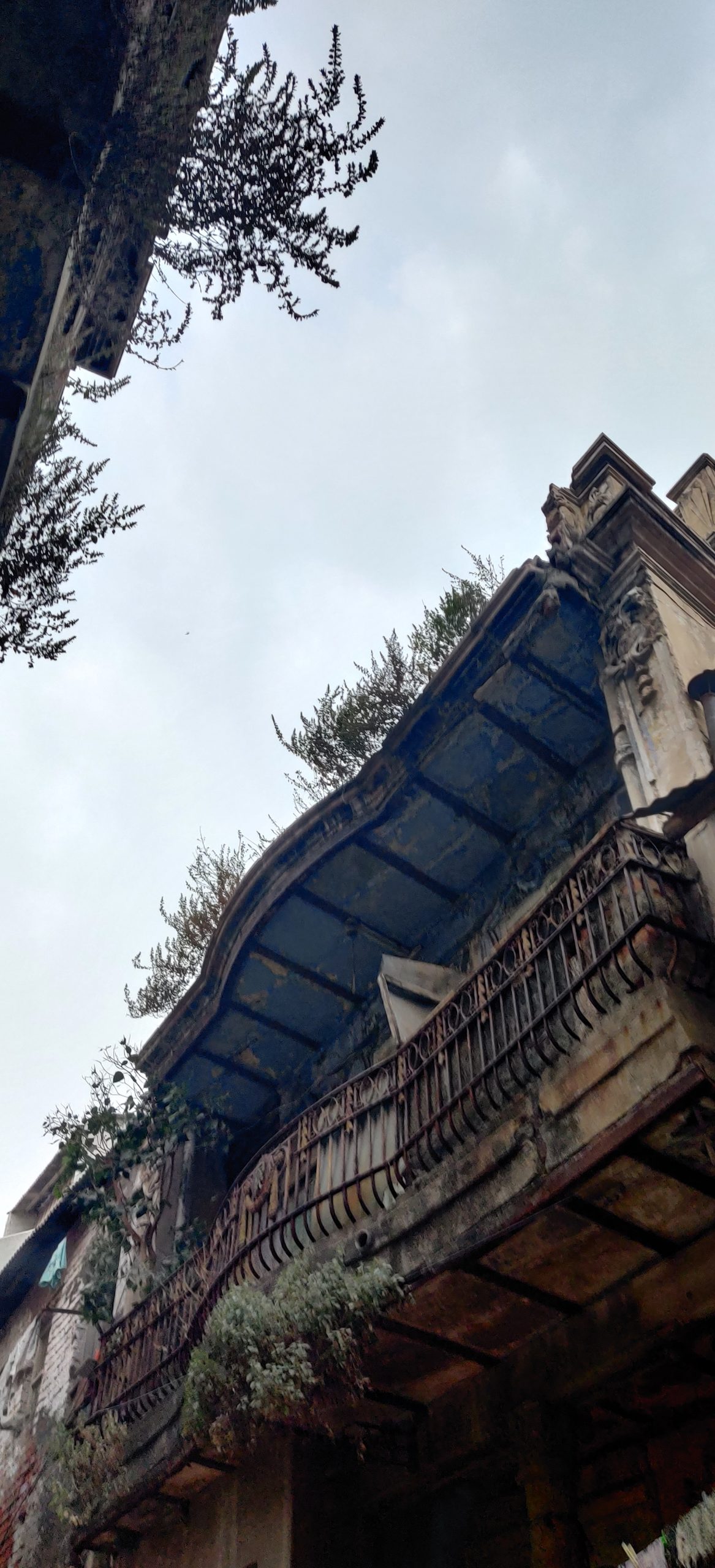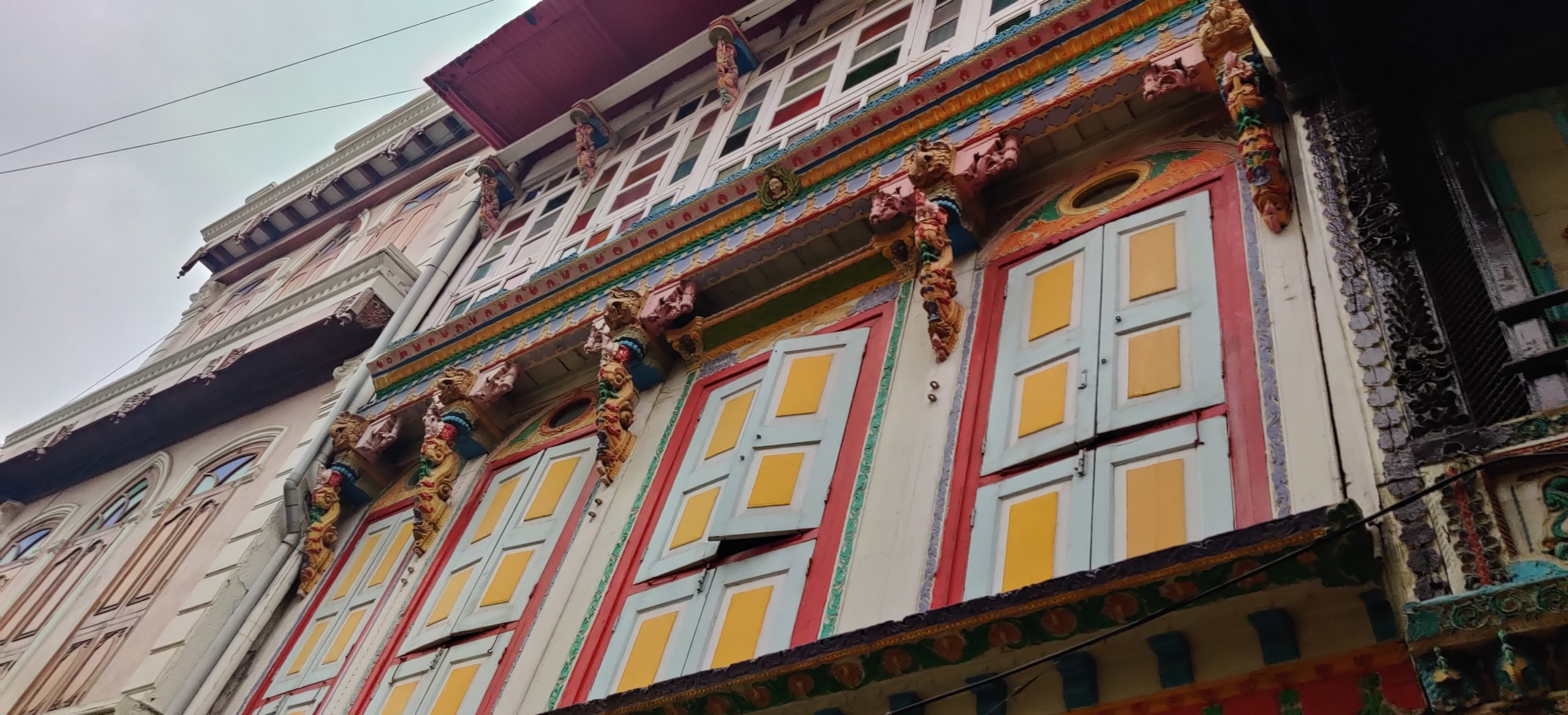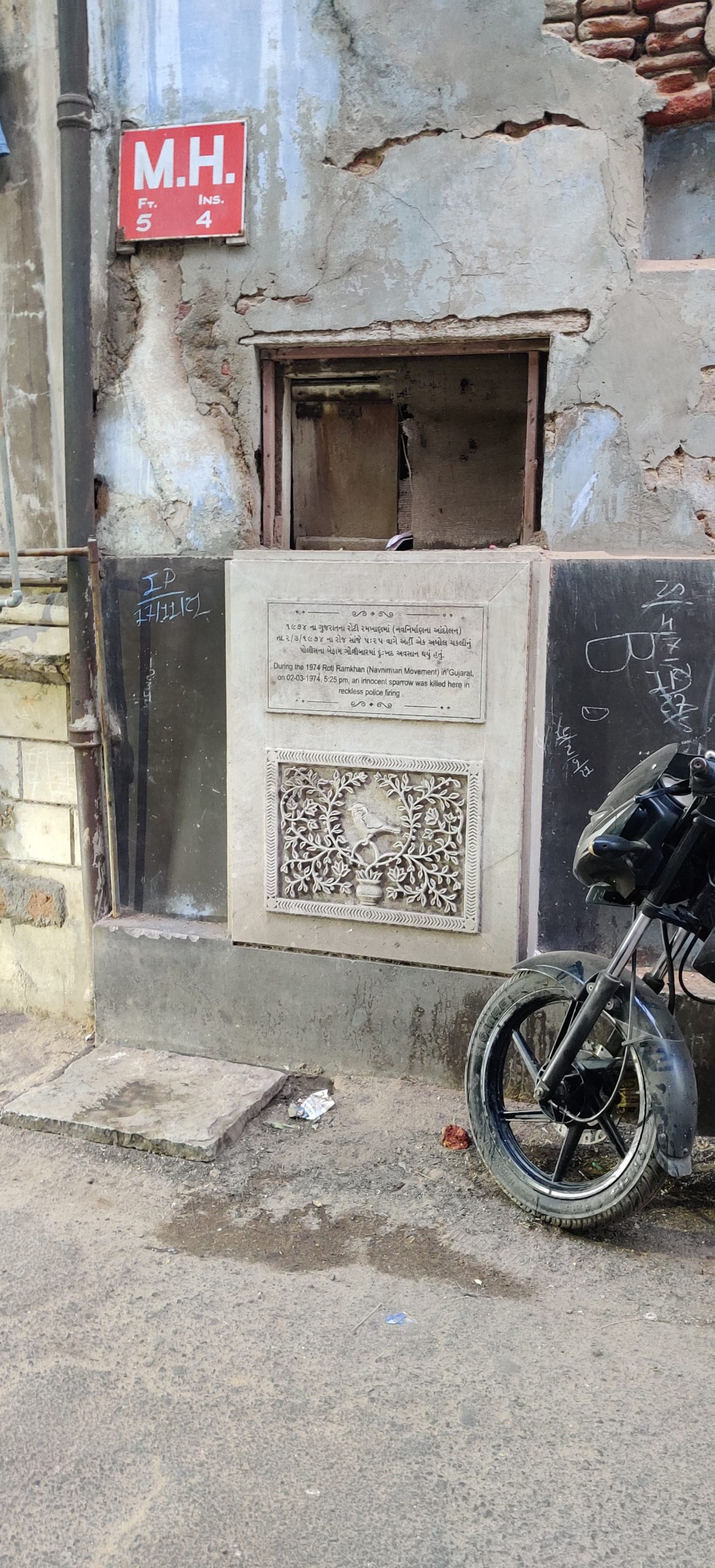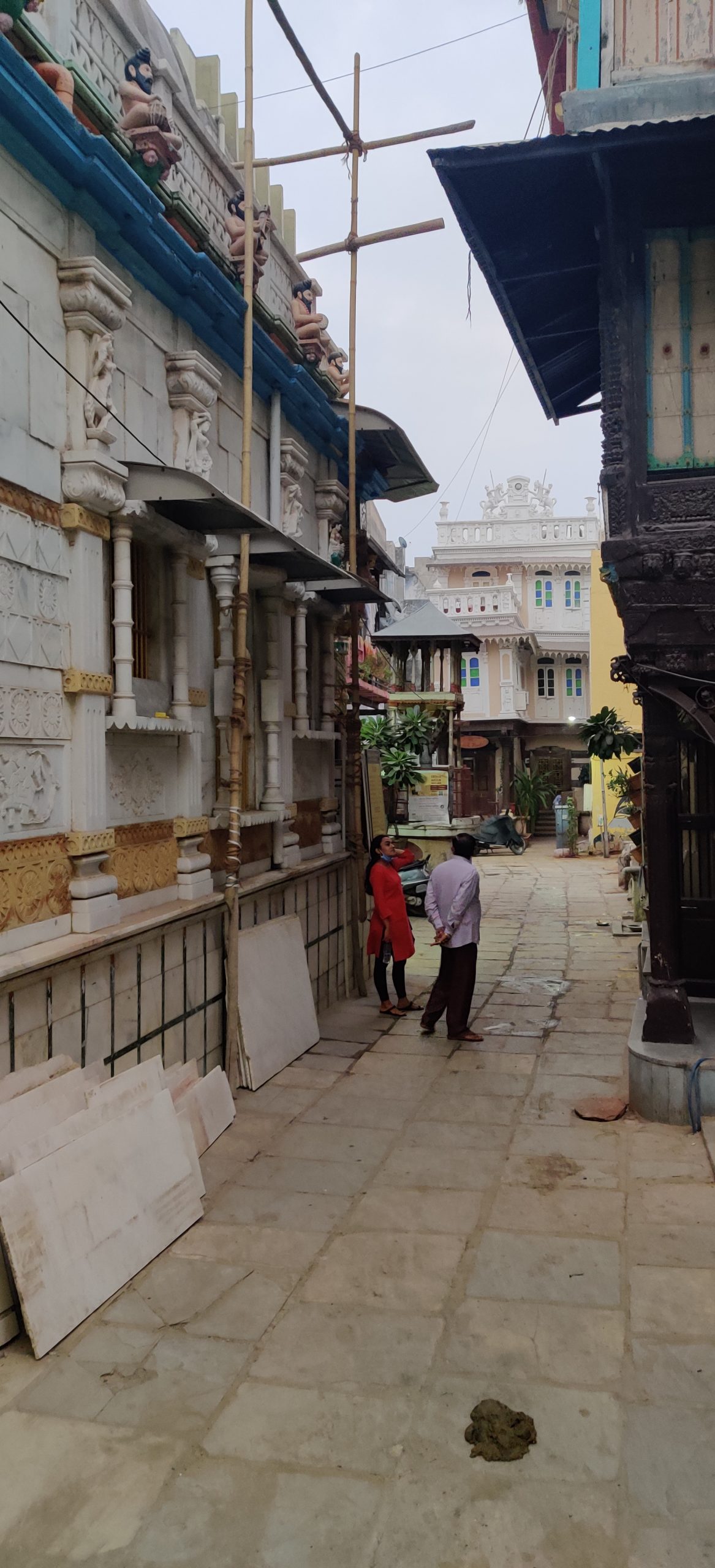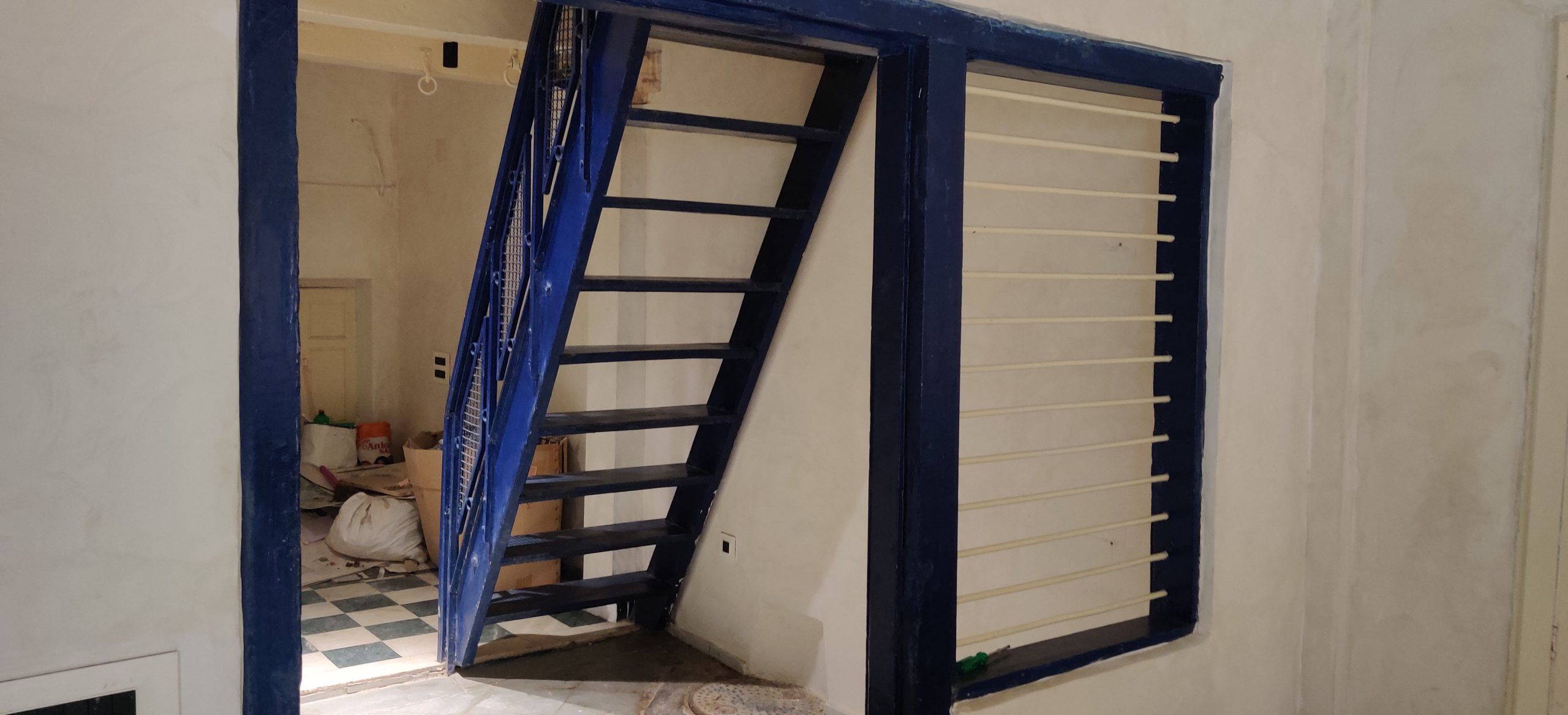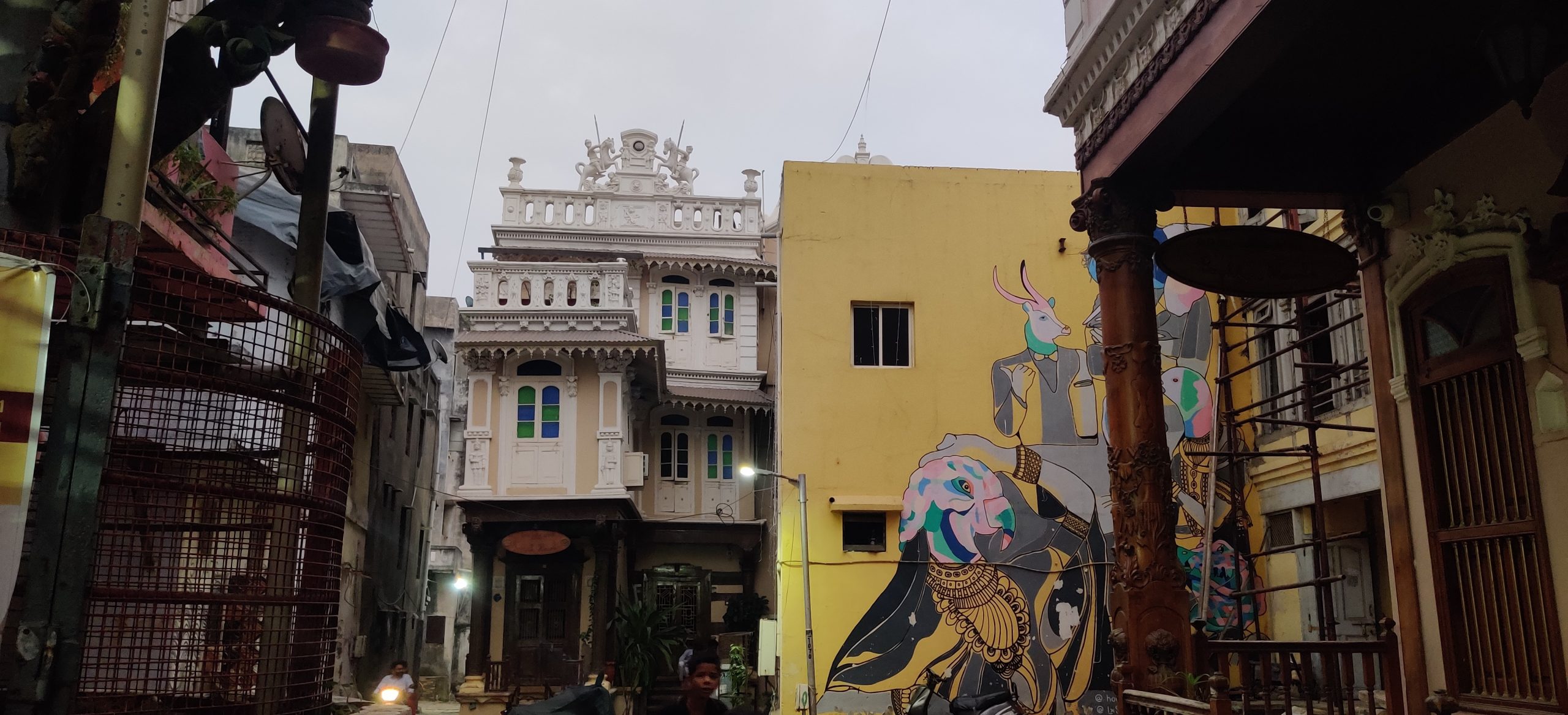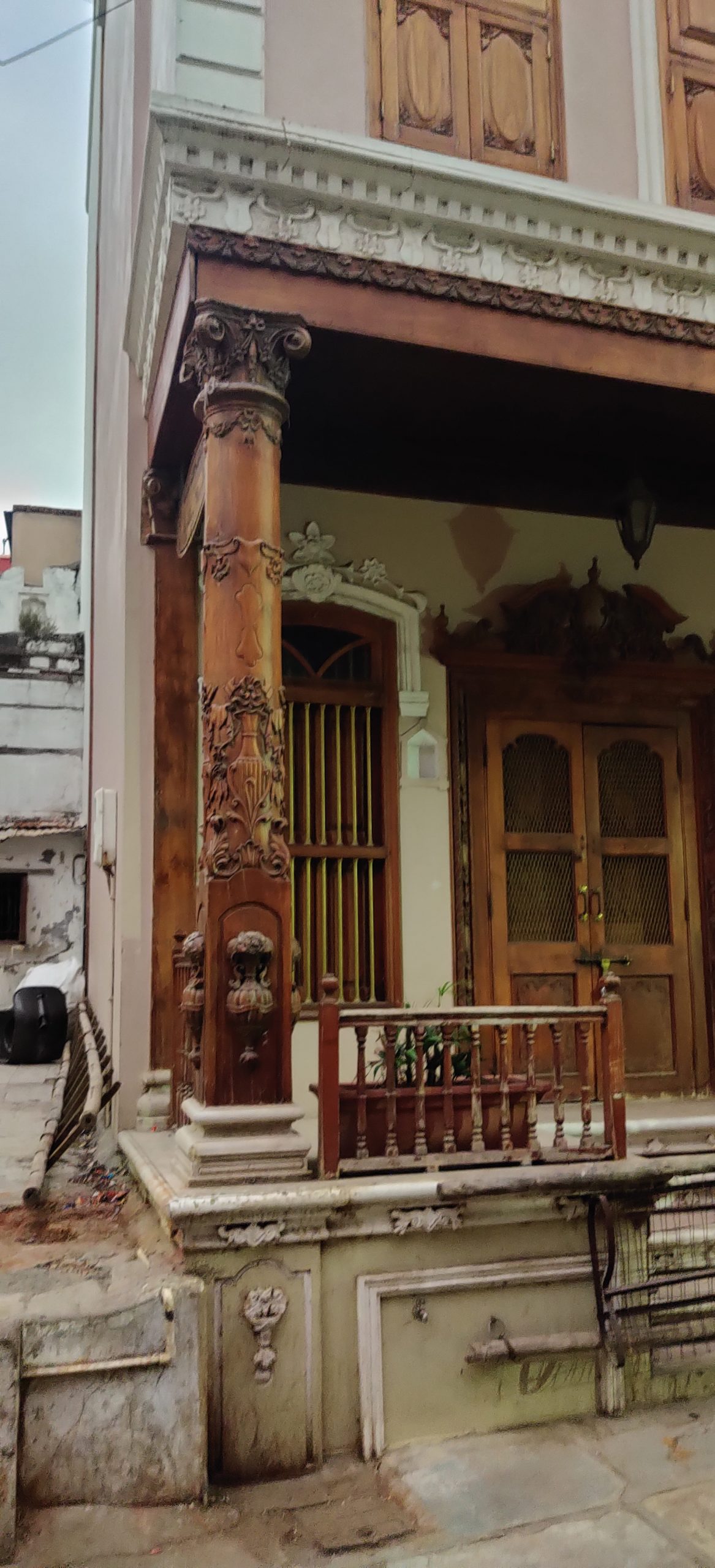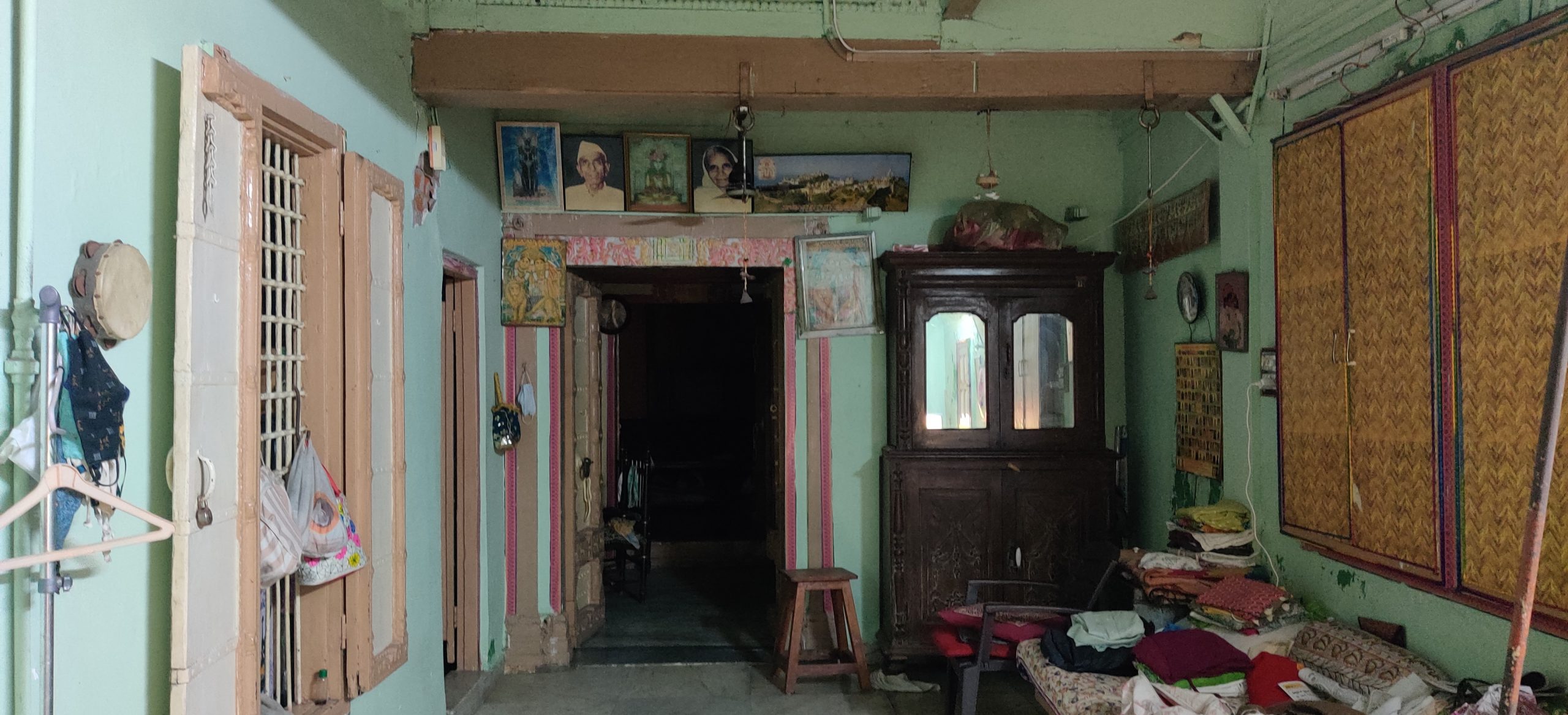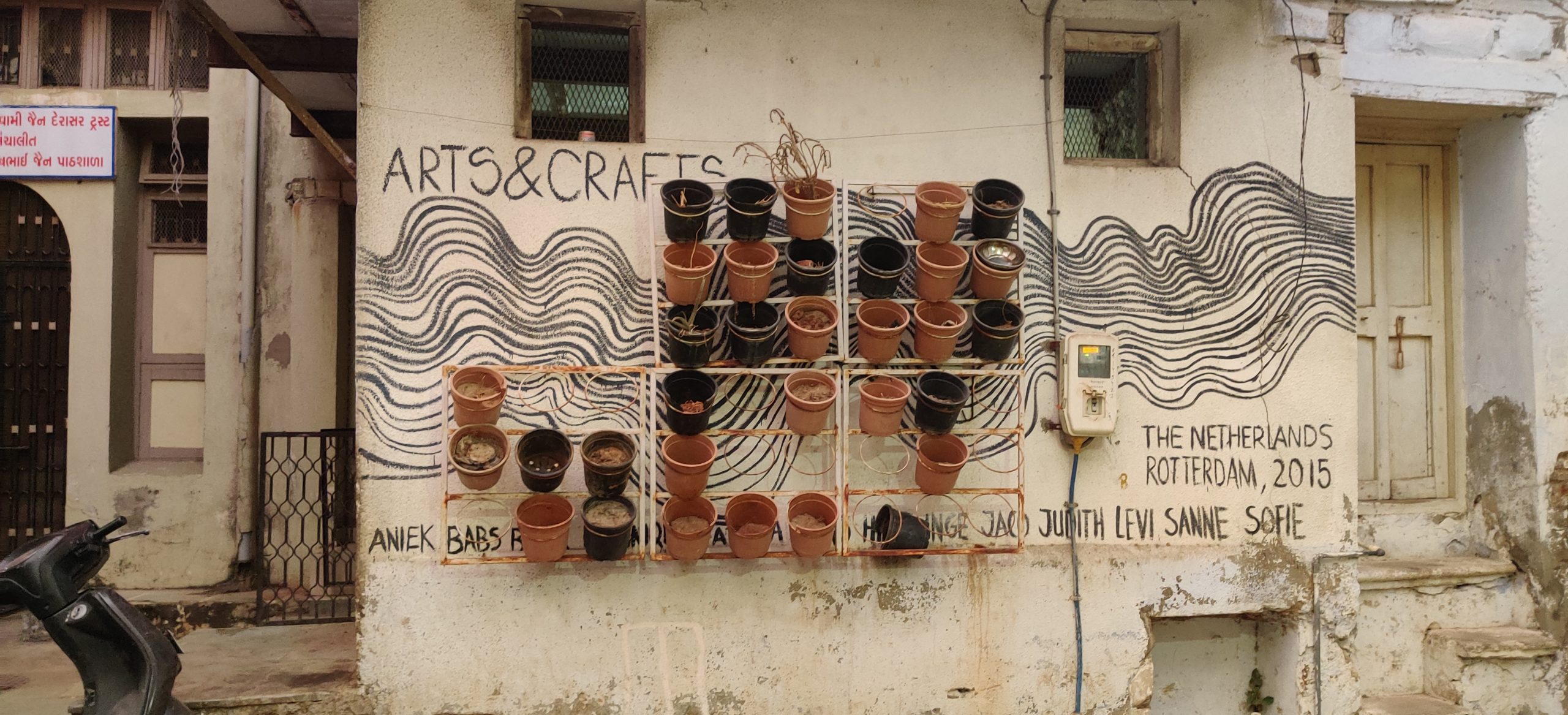They are one of the distinctive features of old Ahmedabad. The city’s Pols – residential areas that developed in close quarters to one another amidst narrow streets – are what set the city apart – and remind both residents and visitors that heritage is not just preserved in the buildings, but also in people and their traditions.
Settlement on a Slope
One of the city’s more distinctive Pols is Dhal ni Pol. Dhal ni Pol means a ‘settlement on a slope’. It is located on a knoll named Ashabhil no Tekro after King Ashabhil who is believed to have had a kingdom called Ashawal till the 14th Century. The hillock was the highest point of the area. Later, in 1411 AD, when Ahmed Shah founded Ahmedabad, Ashabhil no Tekro came to be known as Astodia and became a part of the walled city.
Dhal ni Pol, like the others, features narrow houses, which generally have courtyards. Adjacent Pol houses also share two or three walls. The Pol was inhabited mostly by carpenters from the Sankheda region who migrated to Ahmedabad. As it was developed by carpenters, the Pol features intricate wooden designs and wood is used as a main component in the architecture.
The courtyards are architecturally very efficient as they allow the sunlight to reach the ground floor even though the houses are quite narrow. The courtyards also ensure proper ventilation.
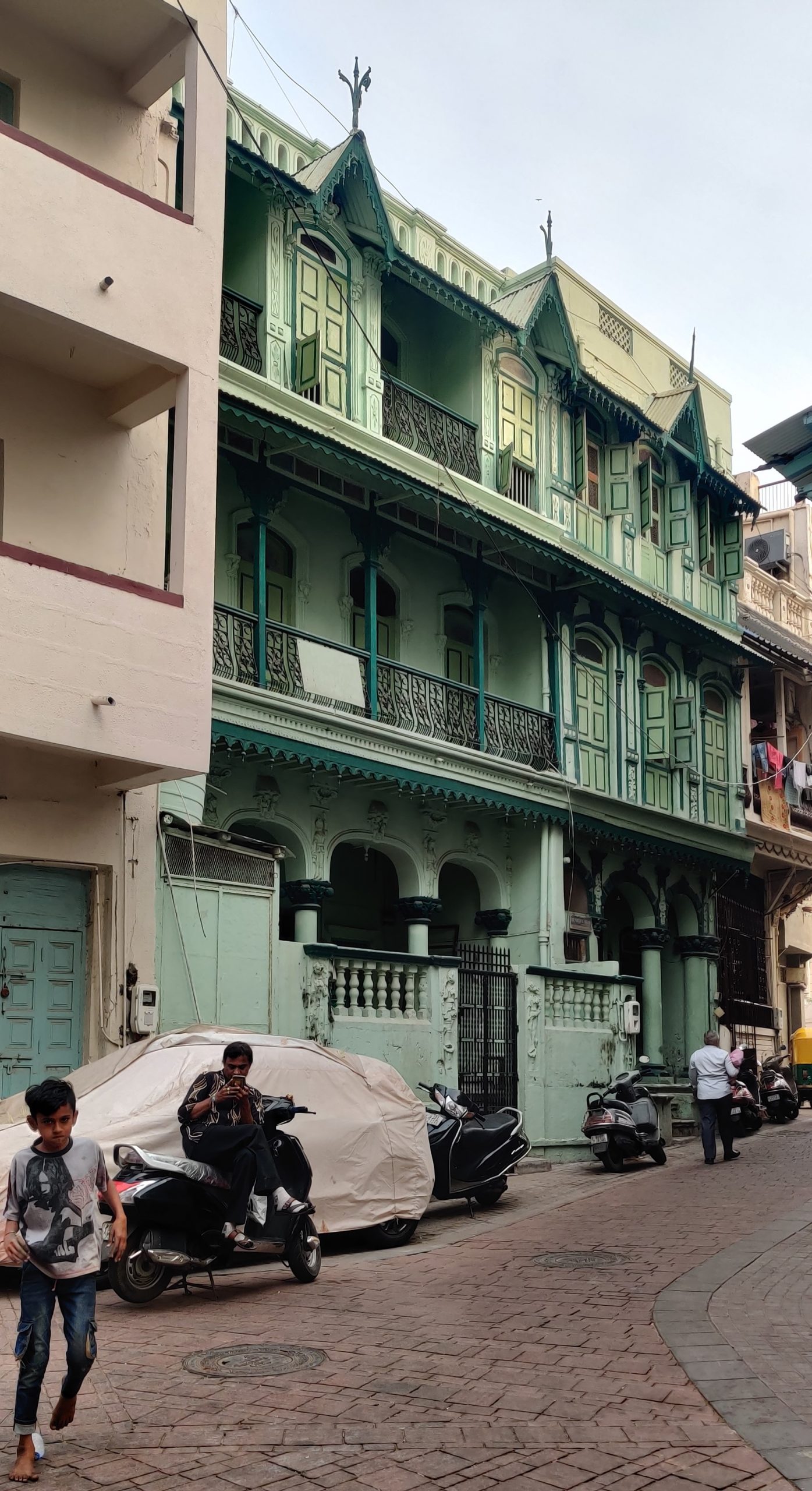
The 36 Pols
Dhal ni Pol is the second-largest Pol of Ahmedabad. However, it has the highest number of inhabitants in the entire city. There are 36 Pols inside Dhal ni Pol. The Pol is inhabited by people with different beliefs, religions and ideologies but they all stand together. It represents the true spirit of India.
Dhal ni Pol is a small city of its own. There is a small tea stall at the gate, and it also houses a library, grain mill, salon, doctor’s clinic and grocery stores. During the recent pandemic, when most of the world was struggling with zero human interaction, the people of the Pols were living in a completely different world.
There are old chabutras, a structure mostly found in India. They are a tower-like structure wherein birds can make their nests. Inside this structure mostly pigeons reside and breed. Hindu temples, a Jain temple, a shrine and a mosque within the Pol. The Tirupati Balaji Temple and Rani Sipri Mosque even share a wall. The residents feel a true sense of community – during communal riots, they protected every religious place within the Pol and stood by each other.
A neighbourhood of character
Inside the Pol, houses are beautifully painted – some yellow and brown, others pink and green. Some have intricately painted the detailed designs whereas some have used monochrome brown paint and let the designs speak for themselves.
Some residents now run homestays in the Pols – the French Haveli and Baghban Haveli lets visitors experience the true spirit of the neighbourhood.
The Mahila Housing Trust (MHT) conceptualized a ‘Public Area Enhancement in the Heritage Precinct of Dhal Ni Pol’ in 2015 together with experts from CEPT University. The project widened lanes wherever possible by reducing the otlah (verandah). They refurbished the chowk area, improved the sewage system and restored the chabutras and many houses.
“We launched this program after discussing it with the community and developed the plan thereafter,” explains Bharti Bhonsle, Program Head, Public Area Enhancement in the Heritage Precinct of Dhal Ni Pol.
Neighbours forever
In a world where people seldom know the names of our neighbours, the residents of the Pols stand out. Instead of spending their time in isolated rooms, they spend it on the otlah talking about their day while sipping a cup of tea.
They celebrate all festivals together, especially Navratri and Uttarayan. People who do not live in the Pol keep their houses so they can fly kites on Uttarayan and even rent out their terraces for the festival. Sheri Garba – a rarity nowadays – was also a popular event. The famous Falguni Pathak used to live at Dhal ni Pol and play Sheri Garba.
“Four generations of our family have lived in this house; my grandson is in college and he still loves our Pol,” says resident Falguni Vyas, adding, “The best part is the comradery that we share with one another. Like every family, we fight but we are always there for each other.”
“I live with my son who is a carpenter, I help him as much as I can by selling a few groceries and vegetables in the lane,” says Sushilaben.
“I have a house in Vastrapur for 35 years but do not want to leave. I live with my mother who is 84-years-old. If I want to go out somewhere, I can just tell anyone in the Pol and they will take care of mom and even bring her anything she needs,” said Punita Madhusudan Vaidya.
The martyred sparrow
During the police firing in Navnirman Andolan, an innocent sparrow was killed, for which the people of the Pol held a funeral ceremony; they then built a shrine for the sparrow. The sparrow is not referred to as dead but as a martyr.



